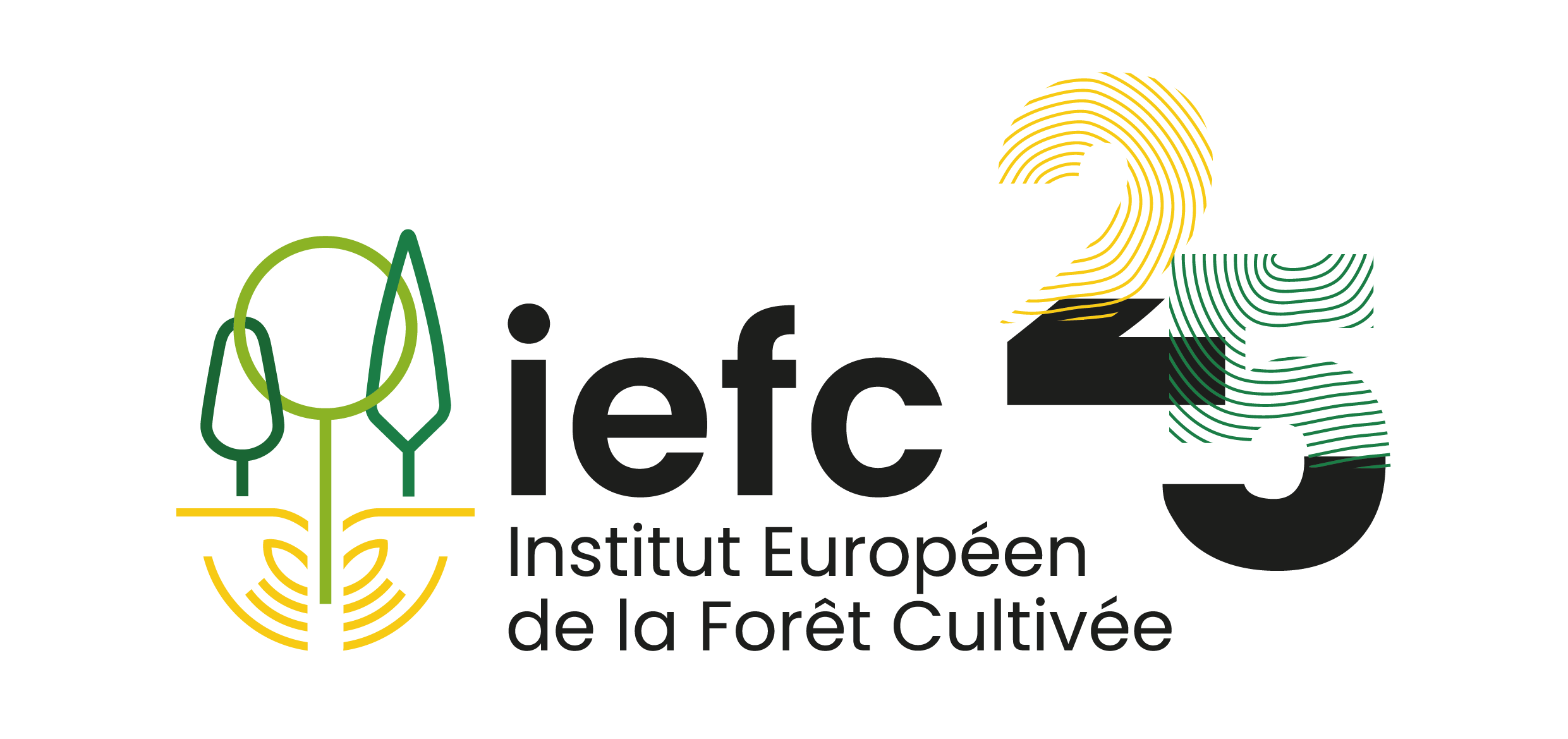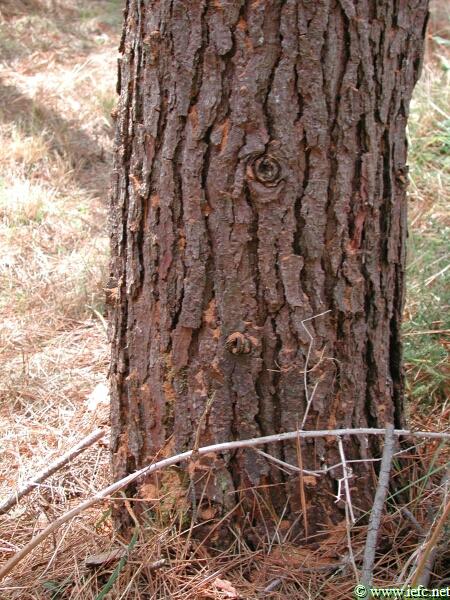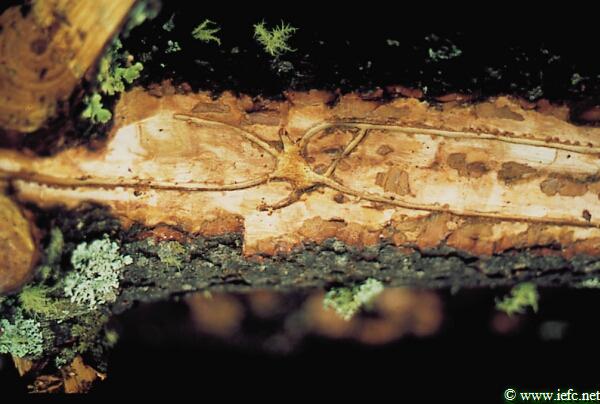Pine stenographer beetle - Six-toothed bark beetle
Ips sexdentatus (Bömer) (Coleoptera, Scolytidae)
Synonym: Dermestes sexdentatus
Six-toothed bark beetle.
Host tree
- Mainly pine species (Pinus), but also other conifers like Douglas fir (Pseudotsuga menziesii).
Identification
- Tree tops become discoloured (needles turn yellow then red-brown).
- Orange or yellowish sawdust coming out from insect entry holes on the trunk (between March/April until September/October)(Photo 1). Sometimes presence of pitch tubes around the entry holes.
- Presence of galleries under the bark (Photo 2). The galleries system is very typical with 2-5 main branches (maternal galleries). The length of these egg galleries is variable and can go until 1 meter or more.
- In the gallery system larvae (white and c-shaped), pupae or (immature) adults can be present (Photo 3). Immature adult beetles are yellowish-brown in colour, mature beetles have an almost black body (and grooved elytra). The beetles are 5-8 mm long, their hind end is cut off and bordered on each site by 6 spines (Photo 4).
Damage
- Reduction of tree growth.
- Weakened trees often die. At high population levels massive attacks can lead to the death of healthy trees.
- The beetles transmit fungi that cause blue stain.
Biology
- There are 2-3 generations per year in southern and Central Europe, but only one in northern Europe. At each generation, females can lay eggs during two or three, consecutive periods giving raise to so-called ´sister broods´.
- Adults fly from the end of March/April to October, flying peaks vary according to climatic conditions.
- The males bore a hole through the bark and attract several females. Each female bores one, long gallery and lays eggs along it.
- Both males and females emit an aggregation pheromone leading to mass attacks.
- Immature adults undergo sexual maturation in the gallery system where they are born.
- Larvae, pupae and adult beetles can overwinter under the bark.
- Normally beetles are only able to attack weakened trees, but at high populations levels, healthy trees can also be infested.
Risk factors
- Stressed trees are more prone to attacks. Therefore attacks are more intense in successive years of drought and on trees ravaged by fire or storms.
- Timber piling near stands or presence of burnt or fallen trees (which are very susceptible to this species), increases the risk for neighbouring healthy trees.
Distribution
- Occurs throughout temperate Eurasia
Pest management
Monitoring
- Use of traps baited with synthetic pheromone.
- Use of log traps in pine stands (renew logs regularly).
Preventive measurements
- Implement sylviculatural practices that favour tree vigour.
- Don´t leave freshly cut wood piling in forests, especially from March to October.
- Remove burnt or wind thrown trees, especially from March to October.
Curative control
- Insecticides can be applied on infested piles to prevent attacks in neighbouring stands. Their use should follow national legislation.
Climate change
- Outbreaks are likely to increase in most of Europe because increased summer droughts, storms and fires will provide more favourable conditions for this secondary bark beetle.




